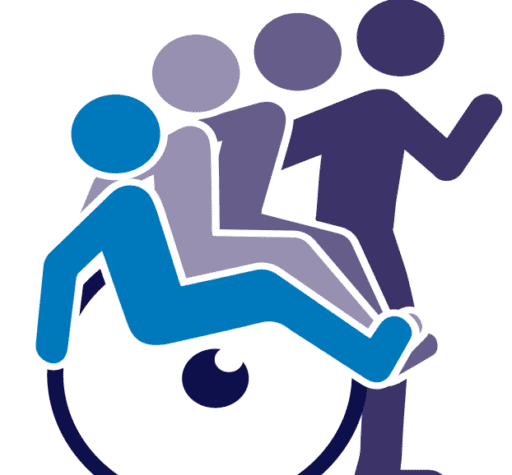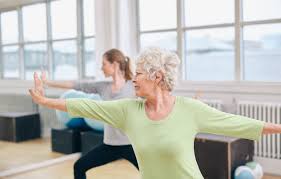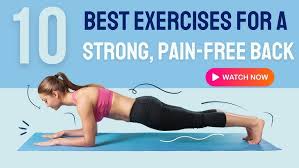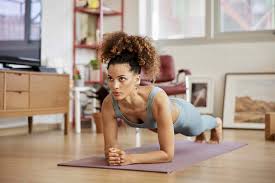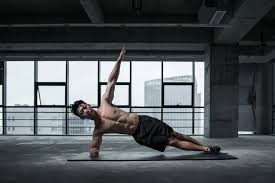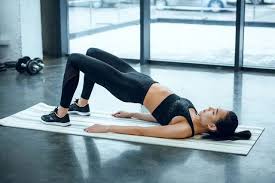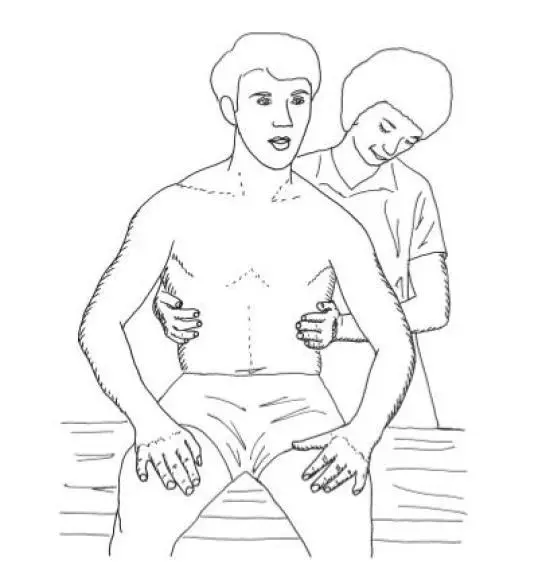23 Best Healthy Exercise at Home
Table of Contents
Introduction:
Staying exercising is crucial for preserving general health, and the good news is that you don’t need a gym to start exercising. A flexible, affordable, and easy method to increase energy, promote mental health, and enhance fitness is to work out at home.
You may do a variety of routines, such as bodyweight exercises, cardio, strength training, and stretching, with just a little room and a little drive. Building a regular and healthful exercise regimen in your house is made easier by the fact that home workouts may be customized to meet your schedule and fitness level, regardless of your level of experience.
Best Healthy Exercise at Home:
Lunge:
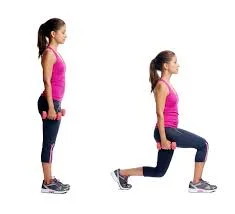
It includes lowering the body into a controlled, balanced position while taking steps forward, backward, or sideways. Strength, flexibility, coordination, and muscular balance between the legs are all enhanced by lunges.
For more intensity, they can be done with body weight or with additional resistance, such as dumbbells. Lunges are a functional and adaptable workout that can be performed at home with little space and are appropriate for all fitness levels.
Squats:
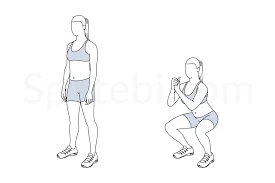
A basic exercise for the lower body, squats mainly work the quadriceps, hamstrings, glutes, and calves. This compound activity works well for strengthening the entire body, boosting posture, and improving balance because it also works the core.
Squats can increase functional fitness by simulating commonplace motions like standing and sitting. They can be done with body weight alone or, for a more difficult workout, using resistance like dumbbells or a barbell. Squats are a versatile and crucial component of any fitness regimen because they are easy to execute at home and require little to no equipment.
Push-ups:
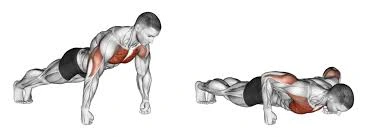
A traditional and incredibly powerful bodyweight exercise, pushups work the triceps, shoulders, and chest while also using the back, core, and even the legs for support. This compound exercise improves muscle tone, strength, and endurance in the upper body.
Pushups are perfect for at-home workouts because they don’t require any special equipment and can be done practically anywhere. They can be altered to accommodate any level of fitness, from beginner-friendly knee pushups to more complex varieties like diamond or decline pushups. Pushups are an essential part of any well-rounded workout regimen since they are straightforward yet effective.
Burpee:
Burpees are a high-intensity, full-body workout that burns calories, builds muscle, and enhances endurance by combining strength and cardio. This dynamic activity usually consists of a push-up, a jump into the air, a squat, and a jump back into a plank.
Burpees are a very effective exercise for general fitness because they work the legs, arms, chest, and core, among other muscle groups. They are ideal for at-home workouts because they don’t require any special equipment and can be done in a small area. Burpees, despite their difficulty, are a great way to improve cardiovascular health, coordination, and explosive force.
Jumping jacks:
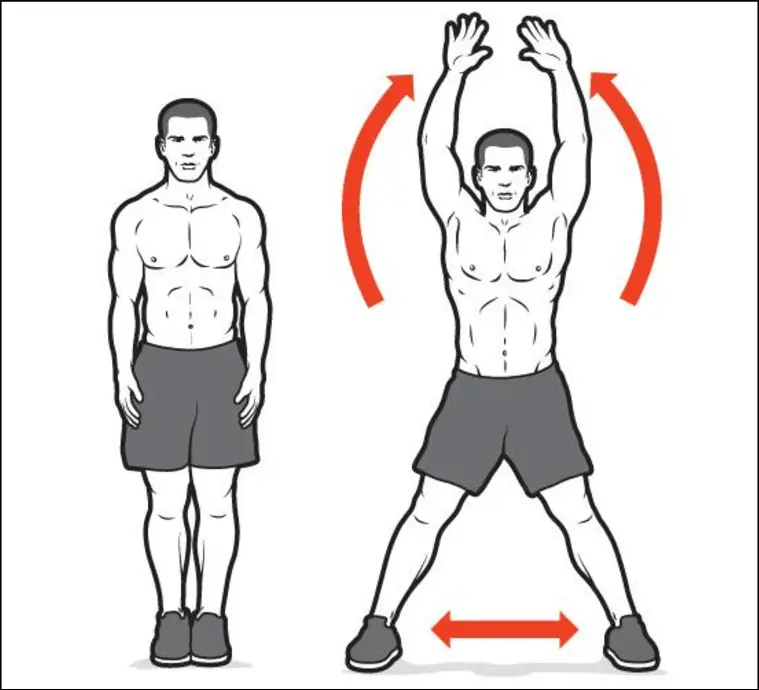
A straightforward but powerful full-body aerobic workout, jumping jacks raise heart rate, enhance cardiovascular endurance, and aid in body warming. This exercise is leaping to a posture where the arms are elevated aloft and the legs are spread wide, then landing back with the feet together and the arms at the sides.
Jumping jacks are an excellent approach to work out several muscle groups at once because they work the shoulders, arms, legs, and core. They are perfect for warm-ups, at-home workouts, and short bursts of physical activity because they don’t require any special equipment and can be performed anywhere.
Plank:
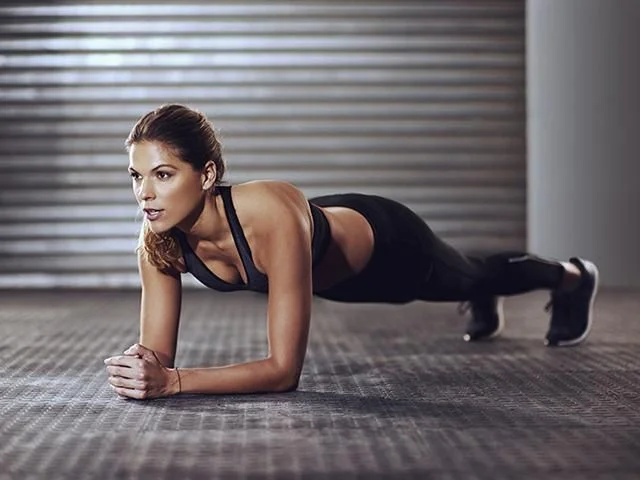
It strengthens the back, shoulders, chest, and glutes in addition to the abdominal muscles. The plank enhances general endurance, core stability, and posture. It’s a great option for at-home exercises because it doesn’t require any equipment and takes up very little room. The plank strengthens and stabilizes the entire body by working several muscular groups at once, and it may be adjusted or advanced to accommodate varying levels of fitness.
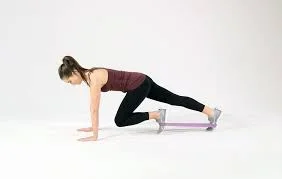
The exercise, which is done in a plank position, simulates a climbing motion by rapidly bringing the knees toward the chest in an alternate pattern. This workout is good for burning calories and increasing endurance because it mainly works the abs, shoulders, chest, and legs while also raising the heart rate. Mountain climbers are ideal for at-home training because they require little room and no equipment. They enhance core stability, agility, and coordination, and their intensity and speed may be readily modified to accommodate all levels of fitness.
Glute bridge:
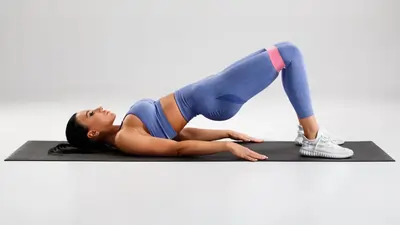
Glute bridges are a very powerful lower-body exercise that works the hamstrings, lower back, and core in addition to the gluteal muscles. Glute bridges are particularly helpful for reducing lower back stress and strengthening the posterior chain. With choices for advancement, they are appropriate for all fitness levels and don’t require any equipment, which makes them perfect for at-home training.
Single leg stand:
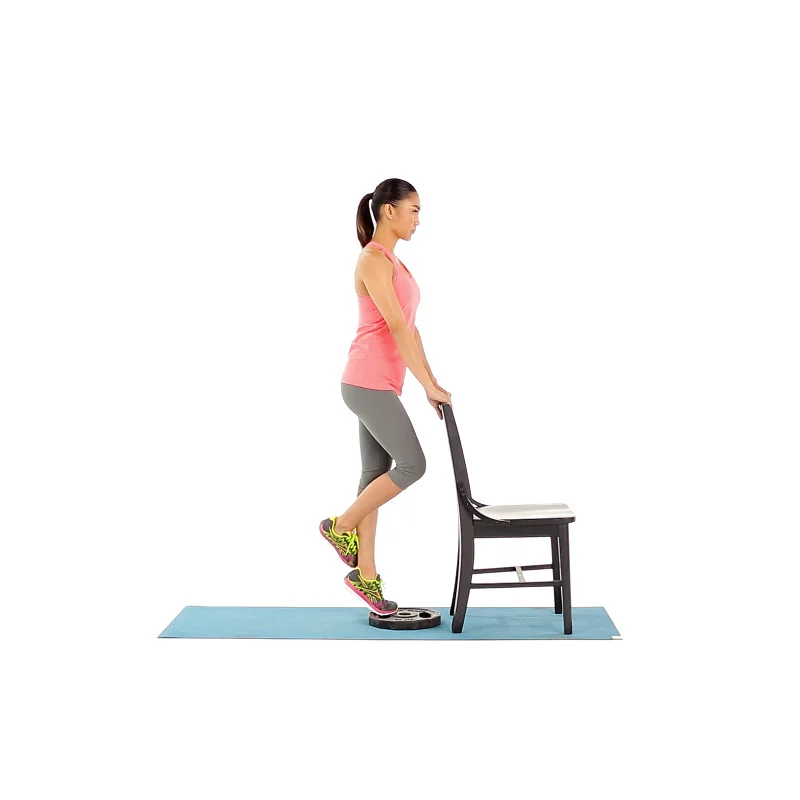
A straightforward yet powerful balance exercise that strengthens the lower body, increases stability, and improves coordination is the single-leg stand. It requires using the leg and core muscles to maintain balance while standing on one leg and keeping the other leg slightly raised off the ground. In addition to improving posture and joint control, this exercise works the glutes, calves, and ankle stabilizers. The single-leg stand is perfect for people of all ages since it is particularly helpful for increasing body awareness and reducing falls. It is ideal for at-home workouts because it doesn’t require any equipment and can be performed anywhere.
Skipping:
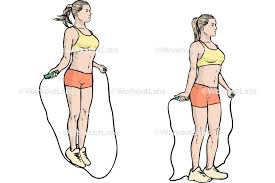
Jump rope, another name for skipping, is a full-body, high-intensity aerobic workout. It greatly enhances heart health, coordination, agility, and endurance while mainly targeting the legs, arms, shoulders, and core. Skipping is an effective activity for health and weight loss because it burns a lot of calories quickly. Skipping is a cheap and practical choice for at-home workouts, requiring only a jump rope and little room. It is appropriate for all fitness levels and offers adjustable rhythm and speed.
Dancing:
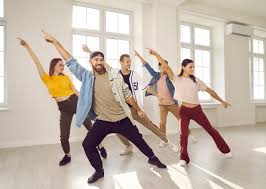
Combining physical movement with rhythm and music, dancing is an enjoyable and energizing kind of exercise that has positive effects on one’s physical and emotional well-being. It works the entire body and enhances muscle tone, flexibility, coordination, and cardiovascular endurance. Dancing is a fun method to stay active because it also helps burn calories, improve mood, and lower stress. Dancing in any open area of the house, whether it be freestyle, Zumba, hip-hop, or traditional genres, doesn’t require any specific equipment. It’s a fun and easy approach to keep up a healthy lifestyle because it works for people of all ages and fitness levels.
Dumbbell rows:
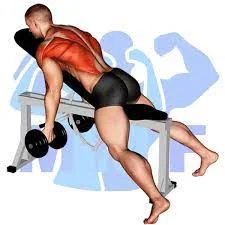
This exercise, which involves bending at the hips with a flat back and drawing a dumbbell toward the waist, enhances posture, back strength, and definition of the upper body. One or both arms, a bench, or a hunched-over standing stance can be used for dumbbell rows.
Leg raise:
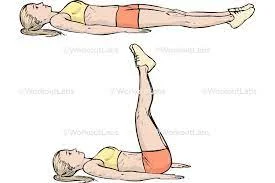
Leg raises are a basic yet powerful core workout that works the muscles in the lower abdomen. This exercise, which involves lying flat on your back and raising your legs straight off the floor, works the hip flexors and strengthens the pelvic and lower back muscles. Leg raises are a great way to strengthen your abdominal muscles, posture, and core stability.
They are perfect for at-home workouts because they require little room and no equipment. By adding ankle weights or lowering the tempo, this exercise can be adjusted for novices or made more strenuous for those with higher levels of fitness.
Overhead press:
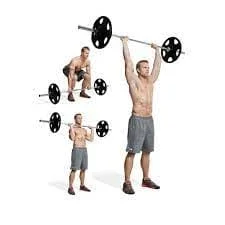
A weight, usually a barbell, dumbbells, or resistance bands, is pressed overhead from shoulder level until the arms are completely extended. This workout strengthens the upper body, stabilizes the shoulders, and improves posture. The overhead press is a versatile exercise that may be performed at home with or without equipment, standing or sitting. For maximum effectiveness and to prevent strain, proper form is crucial, particularly when lifting larger weights.
Calf raises:
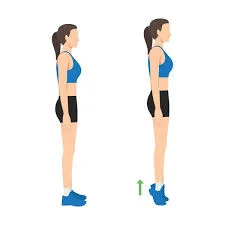
A straightforward but efficient exercise that works the gastrocnemius and soleus muscles in the calf is the calf raise. This exercise, which is done while standing by raising the heels off the floor, strengthens the lower legs, increases ankle stability, and improves balance.
Exercises that require running, jumping, or walking benefit from calf raises, which can help avoid ailments like ankle sprains and shin splints. They can be performed on level ground or, for an added difficulty, with a step or dumbbells. They don’t require any special equipment. A great addition to at-home exercises for increasing lower leg strength and endurance is the calf raise.
Bird Dog:
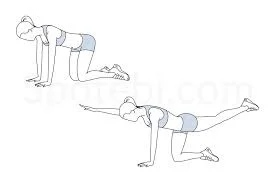
The low-impact, core-strengthening Bird Dog exercise also works the shoulders, glutes, and lower back. The action, which is done on all fours, includes simultaneously extending one arm forward and the opposing leg backward, holding for a brief period of time, then swapping sides and going back to the starting position. By using the deep core muscles, this exercise enhances posture, balance, stability, and coordination. Building spinal support and lowering the risk of back pain are two areas in which Bird Dog excels. All fitness levels can benefit from it, and it’s perfect for at-home training because it requires little space and no equipment.
Superman:
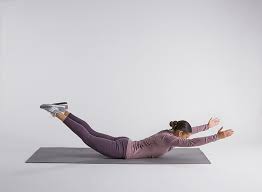
Superman is a bodyweight exercise that focuses on the shoulders, hamstrings, and glutes in addition to the lower back. The posterior chain, important muscles involved in posture, spinal support, and injury prevention, is strengthened by this exercise.
It’s a fantastic addition to at-home workouts because it doesn’t require any equipment and can be done anywhere. Superman is particularly helpful for strengthening the core and preventing the negative effects of bad posture or extended sitting.
Dead bug:
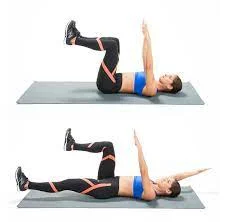
The deep abdominal muscles are worked during the core-strengthening workout, Dead Bug, which also improves spinal stability and coordination. The activity is performed by lowering the opposing arm and leg toward the floor in a gradual, controlled manner while maintaining an engaged core.
You do this while lying on your back with your arms extended toward the ceiling and your knees bent at a 90-degree angle. Without putting undue tension on the lower back, this exercise assists with posture, balance, and core control. The Dead Bug is a safe and efficient supplement to any at-home exercise regimen, suitable for both novices and experts, and requires no special equipment.
Walking:

One of the easiest and most accessible types of exercise that has several health advantages is walking. It is a weight-bearing, low-impact exercise that supports weight management, strengthens bones and muscles, elevates mood, and enhances cardiovascular health. Additionally, walking can lower stress levels, improve digestion, and increase joint mobility. Walking is suitable for people of all ages and fitness levels and doesn’t require any special equipment, whether it is done indoors or outdoors. Even a quick daily stroll can improve general health, making it a simple and efficient approach to maintain an active lifestyle, particularly when combined with at-home exercise.
Swimming:
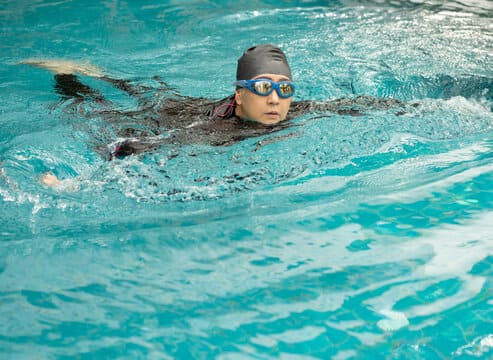
It is perfect for people of all ages and fitness levels, including those who have joint pain or injuries, because it works almost all of the major muscle groups, such as the arms, legs, core, and back, while also being easy on the joints. Swimming enhances flexibility, increases endurance, strengthens the heart and lungs, and aids with weight management. Its rhythmic, meditative quality also contributes to its relaxing, stress-relieving effects. Swimming is a great approach to improve both physical and mental well-being, whether it is done for exercise or leisure.
Bear crawl:
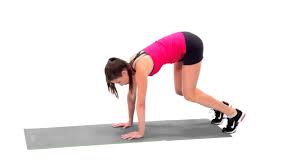
This exercise, which involves crawling on hands and feet with knees slightly raised, works the shoulders, chest, core, glutes, and legs, among other muscular groups, while also improving cardiovascular endurance. The bear crawl is a great exercise for at-home workouts and athletic training since it fosters core stability, functional movement, and total-body control. It takes up little room, doesn’t require any equipment, and can be adjusted in distance or speed to accommodate varying levels of fitness.
Cycling:
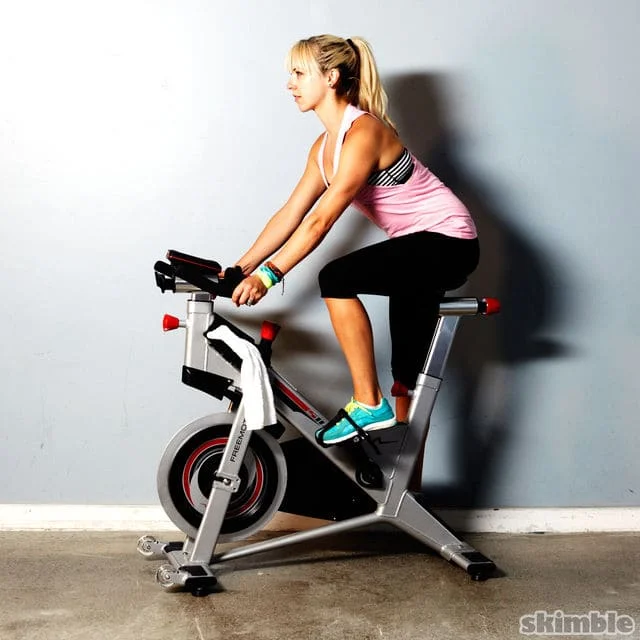
Cycling is a low-impact cardiovascular workout that increases endurance, strengthens the legs, and benefits the heart and lungs. Cycling is a flexible option for people of all fitness levels because it can be done indoors with a stationary cycle or outside on a regular bike. Because it is easy on the joints, it is perfect for people with arthritis or those recuperating from accidents. Cycling is a great option for a healthy, active lifestyle since, in addition to its physical advantages, it can lower stress, improve mood, and aid with weight management.
Running:
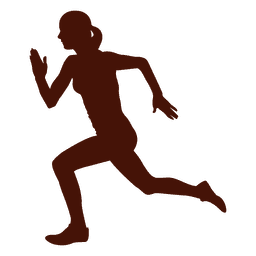
It helps create strong bones and muscles, especially in the legs and core, burns calories, and strengthens the heart and lungs. Additionally, running increases stamina, elevates mood by releasing endorphins, and can dramatically lower tension and anxiety. Running is accessible, requires little equipment, and can be readily modified to suit varying fitness levels through pace, distance, or interval training, whether it is done outside or on a treadmill. It’s an effective strategy to maintain a healthy weight, boost mental wellness, and improve general health.
Conclusion:
Without going to the gym, working out at home is a convenient and efficient approach to maintain your energy, health, and fitness. Numerous activities, including cardio, weight training, flexibility, and balancing exercises, can be effortlessly integrated into daily routines with little space and equipment.
Home workouts are appropriate for people of all ages and fitness levels since they encourage consistency, convenience, and long-term health advantages. People can enhance their general quality of life, mental health, and physical fitness by committing to regular exercise at home.
FAQs
Indeed, you can work out after eating, but the kind of activity you intend to do and how much you’ve eaten should determine when and how hard you work out. Moderate meals may take one to two hours to digest, whereas light snacks can usually be worked out after thirty minutes. It usually takes two to three hours for heavy meals to digest before working out.
Yes, exercising daily is generally acceptable, but it’s important to pay attention to your body and refrain from overdoing it. Daily exercise has its advantages, but for the best recovery and injury prevention, mix in rest days and vary the intensity of your workouts.
Walking is easy yet effective. It can help you maintain a trim figure, lessen your risk for several diseases (such as diabetes and heart disease), strengthen your bones, improve your cholesterol, control your blood pressure, and boost your mood.
Five or more, however, can be perfectly acceptable for you, depending on your activities and level of energy for the day. To train each muscle group twice a week, make sure you’re performing two exercises for each muscle group and completing enough sets each week.
Running or walking isn’t necessarily “better.” Both have substantial health advantages, but the best option will rely on personal preferences, objectives, and physical health. Walking is easier on the joints and might be more sustainable for certain people, but running often burns more calories and might result in quicker fitness gains.
Generally speaking, the morning or late afternoon/early evening offer the greatest advantages for exercising, while the “best” time varies greatly depending on personal tastes, body rhythms, and schedules.
Indeed, walking can provide adequate exercise, particularly if done frequently and quickly. Among its many health advantages are better cardiovascular health, weight control, and a lower chance of developing chronic illnesses. However, depending on personal objectives and existing fitness levels, different amounts and intensities of walking may be required for optimal fitness.
According to the researchers, a person would be placed in the “moderately inactive” group and have their risk of dying young decreased by 16 to 30 percent if they engaged in just 20 minutes of brisk walking daily or the equivalent, which would burn roughly 90 to 110 calories.
It is often advised to take one or two days off each week in order to maximize recuperation and avoid overtraining. The precise amount may vary based on your own demands, workout intensity, and level of fitness. More rest days may be necessary for some people, especially when beginning a new fitness regimen or following strenuous activities.
Bench press, squat, overhead shoulder press, pull-up, and deadlift are the five sets of five complex movements that make up the Big 5 workout regimen.
Walking. Cardiovascular activity, which tones the heart and burns calories, should be a part of any fitness regimen. Additionally, most people can walk anywhere, at any time, and with just a decent pair of shoes.
References:
- Davis, N. (2025j, May 1). 30 moves to make the most of your At-Home workout. Healthline. https://www.healthline.com/health/fitness-exercise/at-home-workouts
- Harvard Health. (2024d, February 20). 5 of the best exercises you can ever do. https://www.health.harvard.edu/staying-healthy/5-of-the-best-exercises-you-can-ever-do
- 6 simple exercises to add to your next at-home workout | Kaiser Permanente. (2025b, February 13). Kaiser Permanente. https://healthy.kaiserpermanente.org/health-wellness/healtharticle.7-simple-exercises-you-can-do-at-home
- Crna, R. N. M. (2025c, April 17). 20 cardio exercises to do at home with minimal equipment, from beginner to advanced. https://www.medicalnewstoday.com/articles/cardio-exercises-at-home
- Neudecker, K. (2025c, February 14). 45 of the Best Exercises to Boost Your Home Workout Gains. Men’s Health. https://www.menshealth.com/uk/building-muscle/a754099/the-15-best-beginners-exercises-to-do-at-home/
- Kamb, S., & Kamb, S. (2025, February 10). The 10 best at-home workouts (No-Equipment!) | Nerd Fitness. Nerd Fitness. https://www.nerdfitness.com/blog/the-7-best-at-home-workout-routines-the-ultimate-guide-for-training-without-a-gym/
